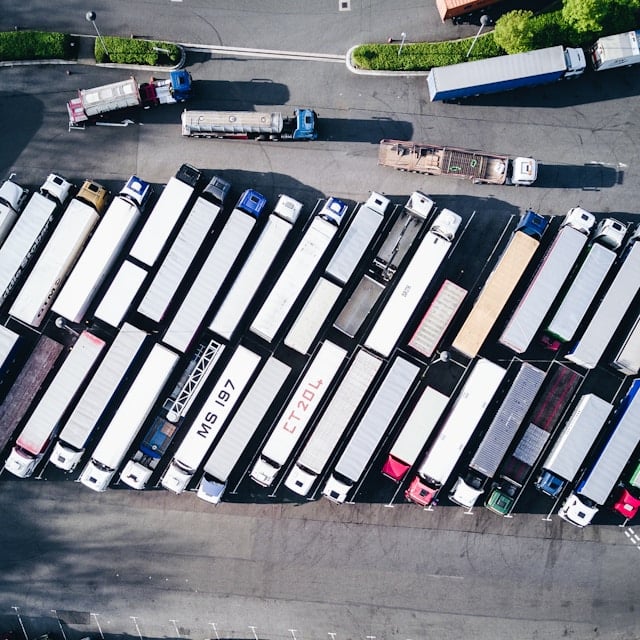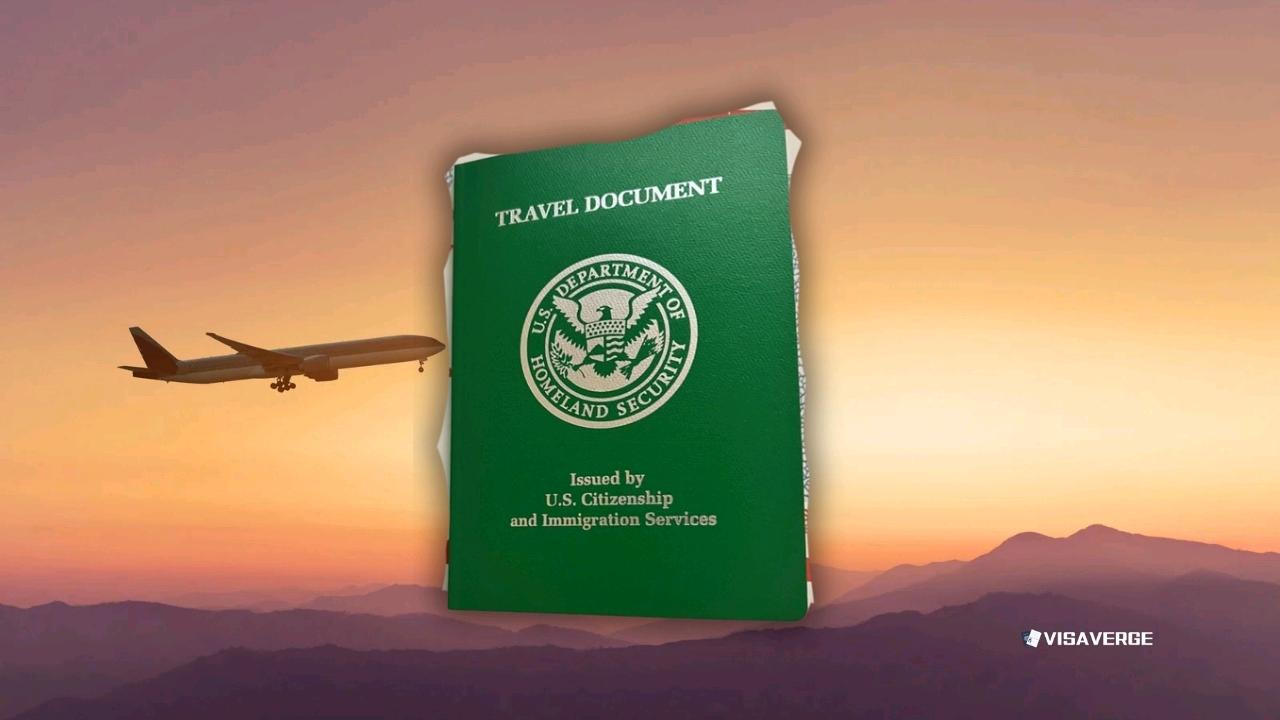(UNITED STATES) The U.S. trucking sector is bracing for deeper delays and higher costs after the State Department, under President Trump, announced an immediate pause on new work visas for commercial truck drivers effective August 21, 2025. The halt is described as a temporary measure while screening and vetting rules are reviewed, but with no end date set. Companies warn the action will worsen an already large worker shortage and ripple through supply chains ahead of the holiday shipping season. The policy applies to all nationalities and does not target specific countries.
Secretary of State Marco Rubio said the pause aims to protect public safety and American jobs after a high-profile fatal crash involving an undocumented driver. “The increasing number of foreign drivers operating large tractor-trailer trucks on U.S. roads is endangering American lives and undercutting the livelihoods of American truckers,” Rubio said. The State Department will assess English-language ability, driving records, and background checks as part of the review, tightening the requirements for future applicants seeking work visas in trucking.

Industry reaction and workforce numbers
Industry groups reacted quickly, warning of immediate delivery slowdowns. The American Trucking Associations (ATA) says the sector faces a gap of more than 60,000 drivers, and that could exceed 80,000 by 2030 if trends continue. Employers have leaned on immigrant workers to help fill routes, especially long-haul positions that see high turnover and weeks away from home.
Key workforce figures:
– Immigrants make up roughly 18% of U.S. truck drivers.
– Foreign-born drivers rose from 316,000 in 2000 to over 720,000 by 2021.
Which visas are affected
The pause covers several visa categories used by trucking employers, with different impacts by program:
– H-2B (temporary non-agricultural): Sharpest impact — about 1,490 H-2B visas issued for truckers in FY2025 (up from 1,400 the year before).
– EB-3 (skilled worker visas): Used by some drivers; a broad category that also includes healthcare and trades.
– E-2 (investor visas): A small number of drivers used these to build owner-operator fleets.
– B-1 cross-border drivers from Mexico and Canada: Not affected, allowing some cross-border freight to continue.
Economic impacts and regional pressure
According to VisaVerge.com analysis, even a modest cut in available drivers can raise shipping rates and lengthen delivery windows across the economy. Recruiters report intense competition for U.S. citizens and permanent residents, especially in fast-growing Sun Belt markets.
Example — Arizona:
– Trucking moves more than 400 million tons of freight each year.
– Dispatchers are spreading loads over fewer drivers.
– Some shippers are accepting longer transit times.
Industry sources estimate the shortage is costing nearly $100 million in lost revenue each week due to idle trucks, detention fees, and missed appointments.
Safety, compliance, and company responses
The U.S. Department of Transportation is signaling stricter compliance on safety and language rules for commercial drivers, mirroring the State Department’s vetting push. Employers say they’re reviewing training standards, road tests, and English proficiency checks for all new hires to reduce risk.
- Unions and safety advocates: welcome stronger standards but say the visa halt alone won’t fix crash trends tied to fatigue, rushed schedules, and uneven training.
- Carrier executives: argue they need every qualified driver and that well-trained immigrant drivers are part of the solution.
Supporters of the pause say cutting new foreign hires leaves more jobs for Americans and lowers safety risks after high-profile crashes. Critics contend the policy leans on a single tragic incident, risks stereotyping immigrant workers, and sidesteps core causes of the worker shortage: an aging workforce, tough working conditions, long weeks away from family, and high early-career turnover.
Training, recruitment, and pipeline adjustments
Some state-level training programs are scaling up. Community colleges and private CDL schools report heavier interest from younger recruits. Employers are partnering with schools to:
- Subsidize tuition
- Speed road testing
- Place graduates into entry-level roles with step-up pay
Trainers warn that inexperience can’t be solved overnight. Carriers must invest in mentorship and safe scheduling if they want rookies to stay.
Companies are also:
– Conducting internal audits of foreign-born workforces
– Updating compliance files
– Reviewing Form I-9 employment records alongside CDL files
Official resources:
– Form I-9 guidance: Form I-9, Employment Eligibility Verification
– Visa policy and travel processing guidance: U.S. Visas – U.S. Department of State
Practical steps for companies and drivers
Carriers are modeling labor costs and recruiting needs under the new constraints. Many expect higher overtime, retention bonuses, and training spend for the rest of the year. Freight brokers say smaller carriers—especially those that relied on a handful of H-2B or EB-3 hires—are most exposed.
Attorneys recommend this checklist for foreign drivers considering future applications:
1. Keep certified copies of all employment and driving records from home and U.S. employers.
2. Secure proof of English proficiency and professional training.
3. Maintain a clean safety record and be ready for on-the-spot skills tests.
4. Build extra time into travel or start dates to accommodate longer processing.
Immigrant advocates warn the public debate must not paint all foreign drivers with the same brush. They note foreign-born drivers helped keep freight moving during past surges—most recently during the pandemic—and that their share of the workforce rose as demand increased.
Policy debate and proposed fixes
Business groups and some state officials urge Washington to pair safety reviews with funding for domestic training and clearer international hiring rules once the pause ends. Proposed measures include:
- Trackable training standards
- Mandatory language checks
- Quicker pathways for experienced drivers with clean records
- Stronger fatigue management and stricter enforcement of hours-of-service limits
Safety advocates emphasize schedule pressure as a major crash driver, regardless of birthplace.
Structural issues that predate the pause
The pause lands amid long-running structural problems in trucking:
– Long-haul jobs have high turnover due to long hours and time away from home.
– Demand has risen with e-commerce growth.
– Newer drivers often shift to local routes to be home nightly.
– Even with higher pay, many choose warehouse or construction jobs.
These trends have widened the worker shortage, making the visa constraint especially painful.
Near-term outlook and uncertainties
Both supporters and critics agree on one point: the industry needs a reliable pipeline of safe, qualified drivers. The disagreement centers on how to build that pipeline—primarily at home or including a lawful share of foreign talent after the review.
- No official end date has been announced.
- Employers are trying to lock in capacity for the fourth quarter with guaranteed pay and steady schedules.
- Shippers are staggering orders and negotiating delivery windows to avoid premium surcharges.
- Market watchers expect sustained wage pressure, continued training expansion, and investments in route optimization and safety technology.
For now, the policy remains in effect nationwide and covers most visa options used by trucking employers. Cross-border B-1 drivers remain a limited exception for specific activities, which may help maintain some North American freight flows between the United States 🇺🇸 and Canada 🇨🇦 and across the southern border.
The broader questions are how long the pause will last and how strict the final vetting rules will be. Until those answers come, companies will keep hiring domestically, immigrant drivers will prepare for tighter reviews, and the country will keep feeling the cost of too few commercial truck drivers behind the wheel.
This Article in a Nutshell
On August 21, 2025, the U.S. State Department paused new work visas for commercial truck drivers, citing public safety and protection of American jobs after a fatal crash involving an undocumented driver. The pause affects H-2B, EB-3 and E-2 visa categories; B-1 cross-border drivers remain exempt. The review will tighten English proficiency, driving record evaluations and background checks. Industry groups warn the sector already faces a 60,000-driver shortfall, potentially rising to 80,000 by 2030, which could raise shipping costs and delay deliveries. Carriers are increasing domestic recruitment, training and retention measures while employers and advocates debate long-term fixes.













